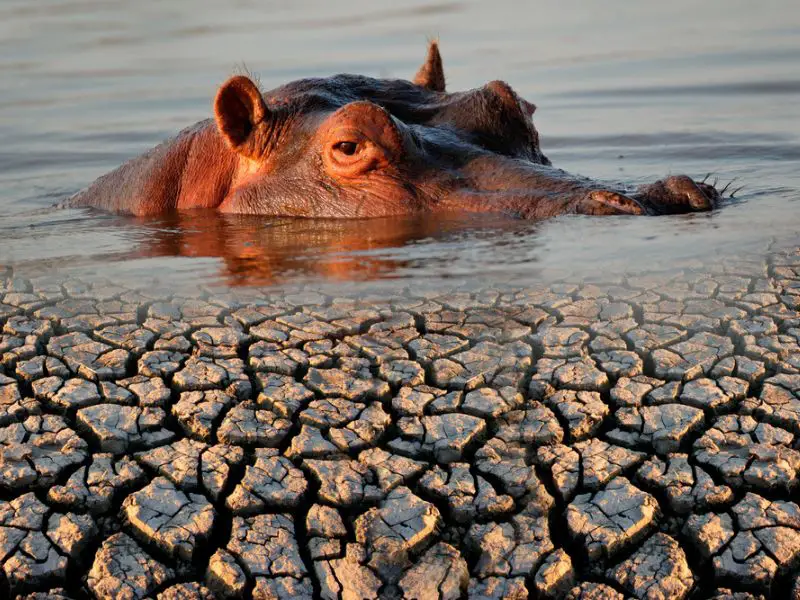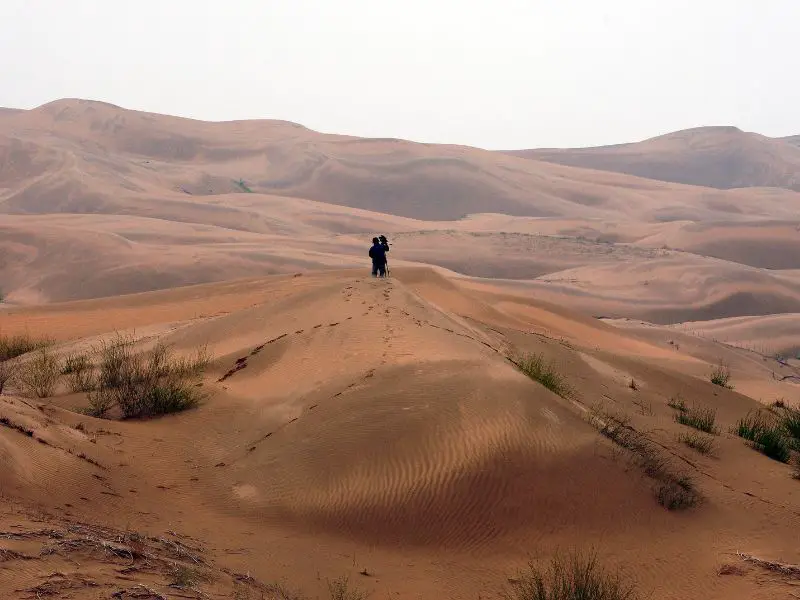Desertification is a process that leads to the gradual degradation of land, which results in the loss of plants, animals, and people.
With increased human pressures on the environment caused by climate change, desertification affects underdeveloped countries the most. In this article, we will dive into the effects of desertification, learn about some causes, and the Great Green Wall Initiative.
What Is Desertification?
Desertification is land degradation in arid regions because of drought and unsustainable agricultural practices. So what does that mean? Because of climate patterns and increased farming, parts of the Earth can no longer sustain plant or animal life.

It also means that in some areas where this process has already taken place, the soil has turned to dust, and the water table has lowered to unacceptable levels.
The term “desertification” does not mean an actual expansion of deserts; instead, it refers to the multitude of natural or man-made processes that potentially transform ecosystems that are not desert into deserts.
Why Is Desertification Happening?
The risk of desertification is extensive and covers over 100 nations, affecting some of the poorest and most vulnerable communities.
According to the World Atlas of Desertification published by the European Commission, over 75 percent of the land area on the planet is now degraded, and over 90 percent of the land area could be degraded by the year 2050. According to research conducted by the Joint Research Centre of the European Commission, a total area equal to half the size of the European Union (1.61 million square miles or 4.18 million square kilometers) is being degraded annually, with Africa and Asia being the regions that are most severely affected.
The causes of land degradation vary from location. In the Uzbek and Kazakh territories around the Aral Sea, the excessive use of water for agricultural irrigation has been the primary cause of the sea’s shrinkage, resulting in the formation of a salty desert. And in Africa’s Sahel area, which borders the Sahara Desert to the north and savannas to the south, population expansion has led to, among other things, an increase in wood gathering, illicit farming, and land clearance for building.
Climate change and average temperature increases might intensify desertification. According to one research, a 2 degree Celsius increase in temperature would radically alter the Mediterranean area, with all of southern Spain becoming desert. Another recent research suggests the same warming would cause up to 30 percent of Earth’s land area to “aridity” or dry out.
When the land becomes a desert, its capacity to sustain people and animal populations falls dramatically. Food frequently cannot grow, and insufficient water and environmental change are more prone. This often results in various human health issues, including hunger, respiratory sickness caused by dusty air, and other diseases caused by a lack of clean water.
Actions to Prevent Desertification
Establishing a “culture of prevention” can go a long way toward safeguarding dry lands, whether desertification is just beginning or is already in progress. It demands a shift in the mentality of governments and citizens. It has been shown that dry land people can be ahead of desertification by upgrading agricultural and grazing techniques, improving long-term sustainability, and active innovation.

Here are some of the preventive acts to stop desertification:
1. Protecting soils against erosion, salinization, and other kinds of deterioration through integrating land and water management.
2. Taking measures to preserve the vegetative cover is one of the essential tools for preventing soil loss due to wind and water erosion.
3. Integrating land use for grazing and cropping allows for more effective cycling of nutrients throughout agricultural systems when conditions are met.
4. Using a mix of traditional approaches and regionally approved and adaptable land use technology.
5. Providing the knowledge for local people to prevent desertification and efficiently manage dry land resources to maximize their use.
6. Replacing traditional land uses, including aquaculture, greenhouse agriculture, and tourism-related industries, with alternative lifestyles that are less resource-intensive and give long-term financial stability.
7. Developing a new private sector-government partnership at the local and national levels to provide business opportunities for farmers and ranchers.
8. Improving existing land management practices by further defining their roles, such as in cases where conservation is to be enhanced.
9. Integrating interdisciplinary efforts, including irrigation development and water resources needed for agriculture and livestock production, soil analysis, and conservation of soils, water, vegetation, and biota.
Effects of Desertification Globally
When desertification occurs, lands formerly used as a source of food and farming jobs become barren, increasing both food insecurity and poverty levels. When desertification spreads, more people suffer from hunger, and fewer habitats are suitable for human habitation. Eventually, these people will migrate for employment in other parts of the world.
Desertification, in a nutshell, exacerbates poverty, slows economic progress, and frequently leads to migration across international borders.
According to projections made by the United Nations (UN), desertification might result in the displacement of 135 million people by the year 2045. This number is roughly comparable to one-third of the total population of the United States.
Dust storms are becoming more frequent and severe due to desertification, which negatively impacts the environment and human health, notably in Africa, the Middle East, and Central Asia. For instance, in March of 2021, northern China was slammed by a severe dust storm that occurred early in the season. This storm was one of the worst to hit Beijing, China.
Dust storms transport contaminants and particulate materials over extended areas. These particles, if inhaled, have the potential to cause disease to respiratory systems and perhaps cause harm to cardiovascular systems.
Desertification is also a threat to more than just people. Degraded lands are making it harder for animals and plants to live where they used to. This led to the extinction of some species. For example, the Great Indian Bustard is a bird that looks like an ostrich. Its global population has dropped to as few as 250, and its dry grassland habitat has shrunk by 31 percent between 2005 and 2015.
In addition, around 70 percent of the Mongolian Steppe, one of the world’s biggest surviving grassland ecosystems, is currently considered degraded, primarily because of cattle overgrazing.
The Great Green Wall Initiative
The development of a Great Green Wall along the southern edge of the Sahara Desert is one of the most inspirational initiatives to prevent desertification. The Great Green Wall is an African-led initiative to combat desertification and drought in the world’s poorest and most vulnerable regions.
It was a straightforward solution to a complex problem. The goal is to build a Great Green Wall of trees 10 miles wide and 4,350 miles long, from Senegal in the west to Djibouti in the east. The problem: Africa’s growing desertification.
Trees have an incredible capacity to cool the atmosphere. Akin to how humans exhale moisture with each breath, trees absorb water from the soil and release it via their leaves through a process known as transpiration.
Discover the great Green Wall in more detail. How they are developed, funded, and what challenges they face.
Author’s Note
It is our responsibility to take care of the planet we call home. Preserving our natural resources, such as land, air, and water, is vital to our survival as a species. Loss of natural resources can have devastating effects on the environment and both human and animal life. The only way to ensure a sustainable future is to understand and take care of our natural environment.
